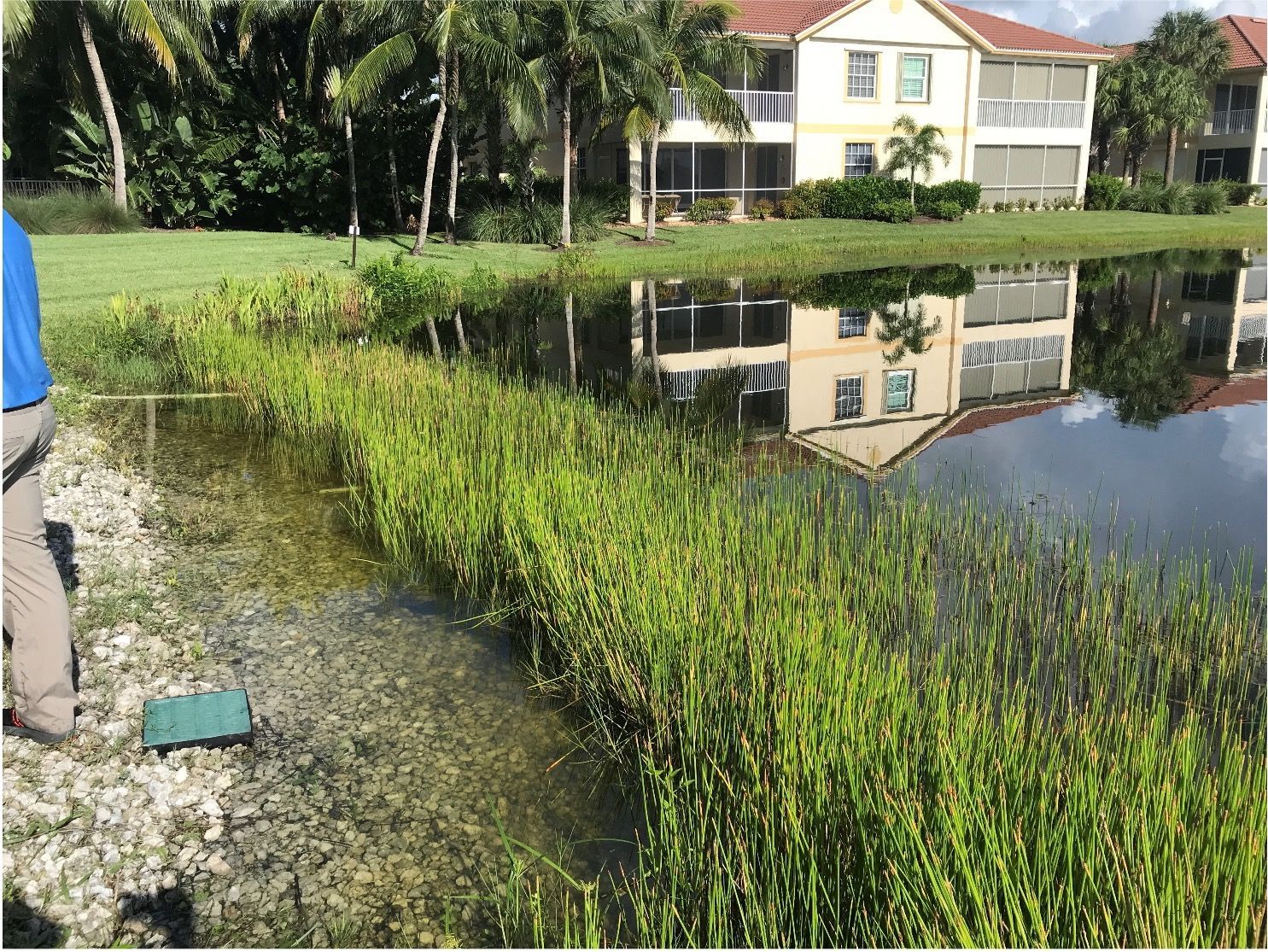Stormwater Management System
Each planned community in Florida is required to have its own stormwater management system. It is a structured approach to manage and control the runoff water from rainstorms. These systems are designed to mitigate the negative impacts of stormwater, which can include flooding, erosion, and water pollution.
Here are the key components and purposes of such a system:
- Retention and Detention Ponds: These ponds are designed to collect and store stormwater. Retention ponds hold water indefinitely, while detention ponds temporarily store water and slowly release it to prevent flooding.
- Swales and Ditches: These are shallow, vegetated channels that help move rainwater away from developed areas and towards larger bodies of water or stormwater management structures.
- Storm Drains and Inlets: These structures collect runoff from streets and other impervious surfaces, directing it into the stormwater management system.
- Permeable Pavements: These surfaces allow water to infiltrate through them, reducing runoff and promoting groundwater recharge.
- Landscaped areas: are designed to absorb and filter stormwater, using plants and soil to remove pollutants.
- Underground Systems: These include pipes and vaults that collect and convey stormwater to other parts of the system. It also includes outfall structures, weirs, and wells.

Above Picture: An outfall structure sometimes includes a weir and helps determine the control level of the lake. When the lake water gets to the top, the water “outfalls” into the box and is carried to a preserve or larger underground system.
A stormwater management system has multiple purposes: By collecting and managing stormwater, these systems help prevent flooding in residential areas, streets, and other developed parts of the community. Properly managed stormwater reduces the velocity and volume of runoff, which in turn minimizes soil erosion and protects the landscape. The systems often include features that filter and treat stormwater, removing pollutants such as oils, heavy metals, and sediments before they can reach natural water bodies. Some components of the system, such as permeable pavements and retention ponds, help water infiltrate the ground, replenishing groundwater supplies. Stormwater management systems help communities comply with local, state, and federal regulations designed to protect water resources and the environment. Features like retention ponds, rain gardens, and bioswales can be designed to enhance the visual appeal of a community and provide recreational spaces for residents. It is important to select a lake bank stabilization system that is aesthetically appealing over a long period of time. Geotubes and SHORESox™ fail over time and become ugly.

Above Picture: A healthy littoral shelf helps filter water that runs off of homes and landscaping before it enters the lake itself. Then the water sits in the lake while further contaminants sink to the bottom into the mud.
In Florida, where heavy rainfall and tropical storms are common, effective stormwater management is crucial to maintaining the health and safety of planned communities. The systems are designed to handle large volumes of water efficiently, protecting both the built environment and natural ecosystems.
Recent Posts






